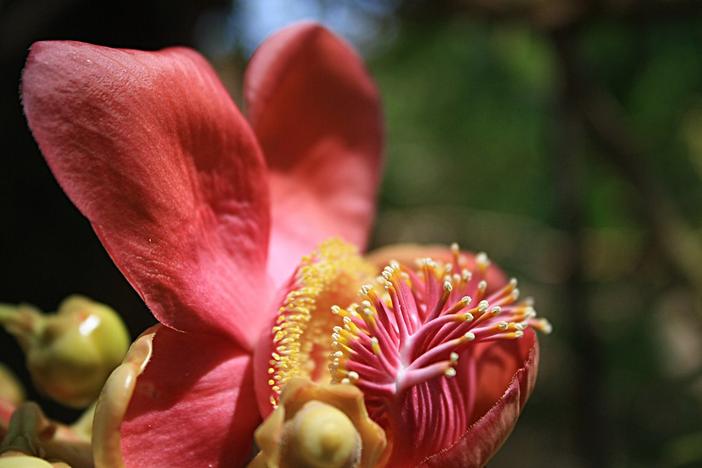Brazil Nut
(Bertholletia excelsa)
Brazil Nut (Bertholletia excelsa)
/
/

Nagesh Jayaraman
CC BY 2.0
Image By:
Nagesh Jayaraman
Recorded By:
Copyright:
CC BY 2.0
Copyright Notice:
Photo by: Nagesh Jayaraman | License Type: CC BY 2.0 | License URL: https://creativecommons.org/licenses/by/2.0/ | Uploader: Fountain_Head | Publisher: Flickr



























Estimated Native Range
Summary
Bertholletia excelsa, commonly known as Brazil Nut, is an evergreen tree native to the non-flooded rainforests of the Amazon Basin. It thrives in the dense, moist, tropical rainforests of Brazil, Bolivia, and Peru. This majestic tree is one of the giants of the Amazon, reaching up to 50 meters (160 feet) in height with a trunk diameter of 1 to 2 meters (3 ft 3 in to 6 ft 7 in). The Brazil Nut can live for centuries, often reaching a thousand years. Its straight stem is typically unbranched for more than half of the tree’s height, culminating in a large, emergent crown that towers above the surrounding canopy. The bark is grayish and smooth, which contrasts with the lush foliage. The flowers are small and greenish-white, appearing in panicles that are 5–10 cm (2–4 inches) long. Each flower features a two-parted, deciduous calyx, six unequal cream-colored petals, and numerous stamens united into a broad, hood-shaped mass.
The Brazil Nut is valued for its large, edible seeds, which are an important food source and are harvested commercially. In cultivation, it requires a tropical climate and cannot withstand frost. It is best grown in full sun with medium water requirements and well-drained soil. While not commonly cultivated outside its native range due to its size and climatic needs, it is sometimes grown in botanical gardens and large tropical landscapes. The tree’s ability to produce nuts only in undisturbed forests makes it a symbol of conservation. However, it is difficult to cultivate and has a complex ecological relationship with certain bee species that are the only pollinators capable of pollinating its flowers.CC BY-SA 4.0
The Brazil Nut is valued for its large, edible seeds, which are an important food source and are harvested commercially. In cultivation, it requires a tropical climate and cannot withstand frost. It is best grown in full sun with medium water requirements and well-drained soil. While not commonly cultivated outside its native range due to its size and climatic needs, it is sometimes grown in botanical gardens and large tropical landscapes. The tree’s ability to produce nuts only in undisturbed forests makes it a symbol of conservation. However, it is difficult to cultivate and has a complex ecological relationship with certain bee species that are the only pollinators capable of pollinating its flowers.CC BY-SA 4.0
Plant Description
- Plant Type: Tree
- Height: 100-150 feet
- Width: 60-80 feet
- Growth Rate: Moderate
- Flower Color: Cream, Green
- Flowering Season: Fall
- Leaf Retention: Evergreen
Growth Requirements
- Sun: Full Sun
- Water: Medium
- Drainage: Medium
Common Uses
Edible*Disclaimer: Easyscape's listed plant edibility is for informational use. Always verify the safety and proper identification of any plant before consumption.
Natural Habitat
Non-flooded rainforests of the Amazon Basin in Brazil, Bolivia, and Peru
Other Names
Common Names: Brazil-Nut, 巴西栗, Brazil Nut
Scientific Names: , Bertholletia excelsa, Bertholletia nobilis, Barthollesia excelsa,
GBIF Accepted Name: Bertholletia excelsa Bonpl.